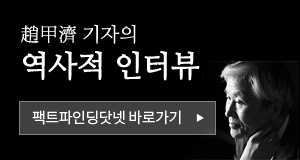73. Many Elderly Falls Due to Inner-Ear Imbalance
By Kathleen Kingsbury TIME Tuesday, May 26, 2009
73-1-355
A simple fall is one of the most dangerous traumas the elderly face: one-quarter of older Americans who suffer a hip fracture after a fall die within six months of the injury. But what exactly causes so many people to fall, and thus how best to prevent such spills, has long evaded the medical establishment.
Now a new study conducted by Johns Hopkins researchers offers potentially lifesaving clues. Looking at data from the National Institutes for Health, researchers found that an estimated 35% of Americans over the age of 40 roughly 69 million people suffer from vestibular dysfunction, or as it is more commonly known, an inner-ear balance disorder. By age 60 and older, the data showed, inner-ear imbalances strike more than half of all Americans.
The study also found that vestibular dysfunction increased the risk of falling by a factor of 12. Although that link now seems obvious, doctors previously thought bone weakness, vision impairment and gait problems were the main culprits of falls among the elderly. And while physicians had always considered balance issues, they were concerned with those due to deteriorating vision or mental status, not the inner ear. 'People with inner-ear balance problems regularly suffer dizziness or vertigo,' says Dr. Yuri Agrawal, an otolaryngologist at Johns Hopkins Hospital and the study's lead author, 'so it makes a lot of sense that they are more apt to fall down.'
A. 어휘
due to ...때문에. inner-ear 內耳(내이). trauma 外傷(외상), 마음의 상처.
the elderly 노인들. cf. THE + 형용사→ 복수보통명사. one-quarter 1/4.
hip 坐骨(좌골), 股關節(고관절), 엉덩이. fracture 骨折(골절), 挫傷(좌상).
injury 負傷(부상). spill 떨어지기, 엎지름. evade 피하다, 회피하다.
the medical establishment 旣成醫學界(기성의학계). cf. the Establishment 기성체제.
researcher 연구자. potentially 어쩌면, 잠재적으로. clue 端緖(단서), 실마리.
institute 연구소. estimated 추측의, 예상의. roughly 대략.
vestibular 前庭(전정)의, 현관의, 대기실의. vestibular 前庭(전정 )의.
vestibular dysfunction 전정기능장애. disorder 질병. obvious 명백한.
previously 이전에는. vision 시각. impairment 減損(감손), 손상. gait 걸음걸이, 보행.
culprit 범죄 용의자, 被告(피고), 죄인. physician 내과의사.
balance issues (內耳의) 균형 문제. deteriorate (성능이) 저하되다, 나쁘게 하다.
status 상태, 사정, 지위. dizziness 현기증. vertigo 현기증.
otolaryngologist 耳鼻咽喉科(이비인후과) 의사. lead author 수석 저자.
B. 구문
- those→balance issues
73-2-356
Doctors still don't know what causes vestibular dysfunction or why it is so common. The vestibular system in the inner ear is made up of three semicircular canals and two otolith organs that continuously send messages to the brain about the head's rotation and motion as well as its orientation relative to gravity. Humans keep their balance using the vestibular system's signals, along with visual cues and touch sensations. When the inner-ear signaling process is disrupted, it directly affects a person's ability to maintain equilibrium.
Most likely, things start going awry simply due to advancing age, Agrawal says. Smoking, hypertension and diabetes are also associated with higher rates of inner-ear balance problems. Fortunately, the condition is easily diagnosable in the doctor's office: patients are asked to stand on a firm padded surface and close their eyes. Without the ability to use touch and vision to stay balanced, patients who suffer from an inner-ear problem promptly fall down. The addition of that simple test to annual physicals, Agrawal says, 'would likely save millions of dollars and lives.'
Indeed, according to the study, preventing tumbles could save the U.S. health-care system billions of dollars. More than 15,000 Americans die each year as a result of a fall, but far more approximately 3 million are injured. Falls not only cause physical injuries, such as hip fractures and organ damage, but also often lead to patients' loss of independence. And the costs to treat such outcomes add up quickly. Direct costs for medical care related to falls exceed $20 billion annually, according to data published by the Centers for Disease Control and Prevention in 2006. 'By employing effective interventions, we can appreciably decrease the incidence of fall-related injuries, improve the health and quality of life of older adults, and significantly reduce health-care costs,' that study's authors wrote.
A. 어휘
vestibular dysfunction 前庭(전정)기능장애. semicircular 半圓(반원)의.
canal 導管(도관), 운하. three semicircular canals 三半規管(삼반규관).
otolith 耳石(이석). organ 器官(기관). rotation 회전.
orientation 方位(방위), 定位(정위). relative to ...에 호응하는, ...에 비례하는.
gravity 중력, 지구 인력. visual 시각적인. cue 지시, 암시, 단서, 역할.
touch sensations 觸覺(촉각). signaling process 신호전달과정.
disrupt 붕괴하다, 분열하다. maintain 유지하다. equilibrium 平衡(평형), 균형.
awry 비틀어 진. due to ...때문에. advancing 전진하는. hypertension 고혈압.
diabetes 당뇨병. associate 관련되다. diagnosable 진단이 가능한. patient 환자.
firm 굳은, 튼튼한, 단단한. padded 속을 채워 넣은, 폭신폭신한.
promptly 재빠르게. addition 添加(첨가). annual 매년의. physicals 신체검사.
prevent 예방하다. tumble 顚倒(전도), 넘어지기, 낙하. approximately 대략.
hip fractures 좌골골절. damage 損傷(손상). treat 치료하다. outcome 결과.
add up 합계하다. medical care 醫療(의료). exceed 초과하다. employ 사용하다.
effective 효과적인. intervention 간섭, 조정.
appreciably 두드러지게, 感知(감지)할 수 있을 만큼. decrease 감소시키다.
incidence 부담, 범위, 영향 .significantly 주목할만하게. reduce 절감하다, 감소하다.
Many Elderly Falls Due to Inner-Ear Imbalance
- 朴承用
- ▶ 필자의 다른 기사보기
- 2009-12-16, 14:48



















